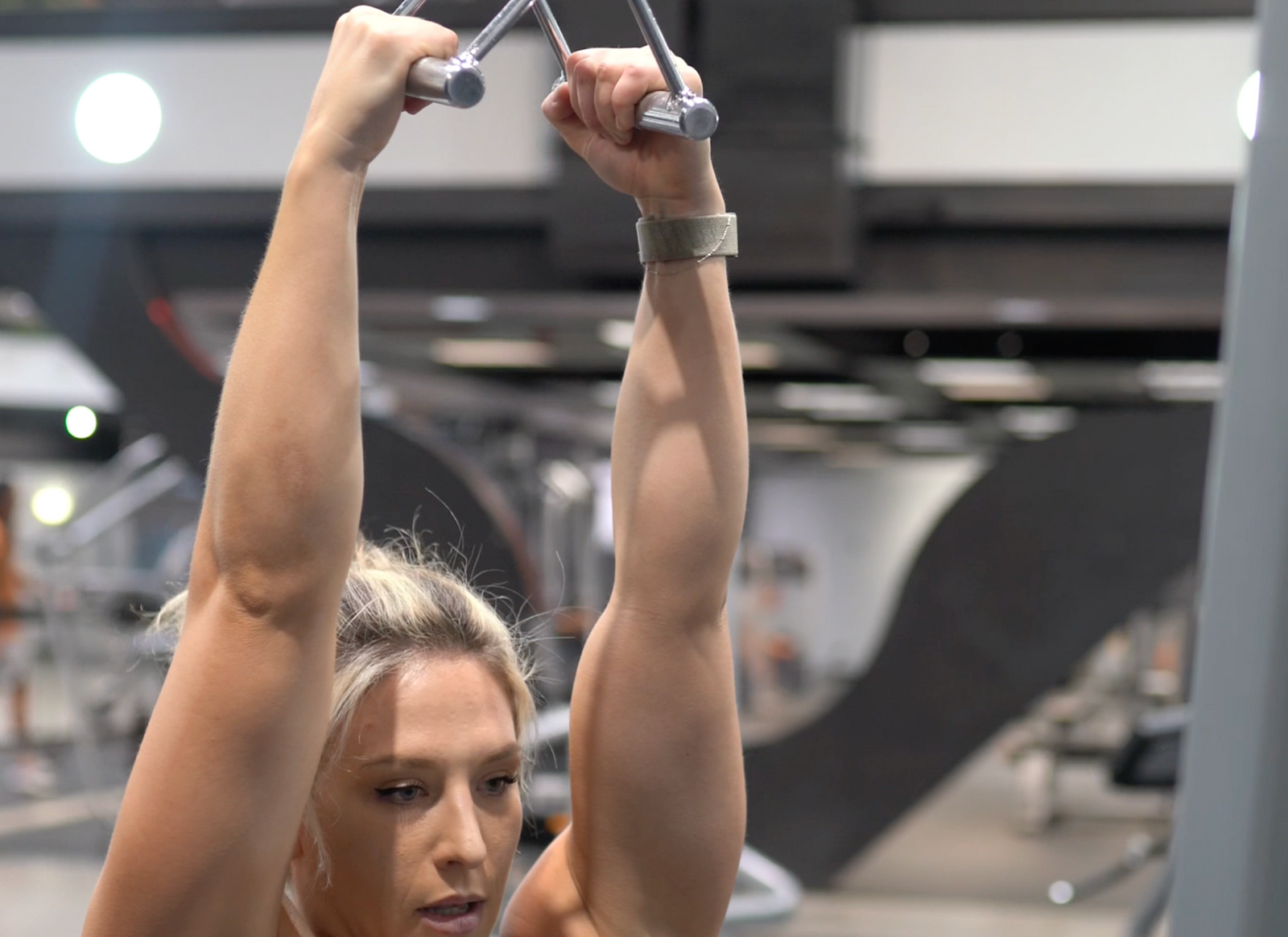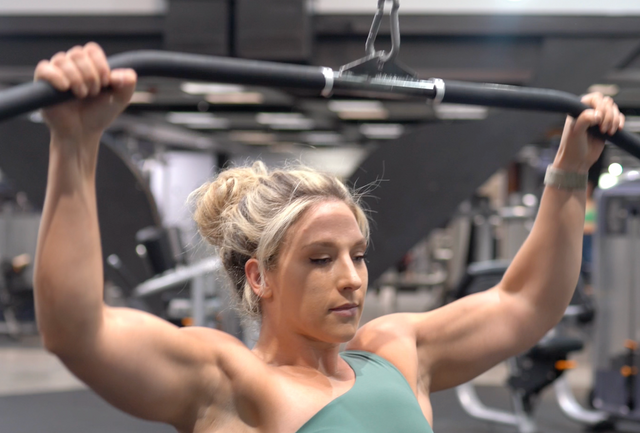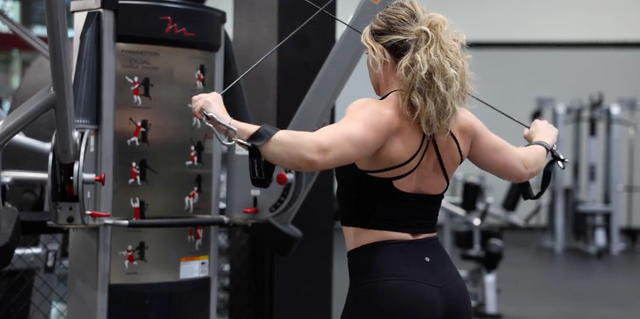Precision Pulling: The Ultimate Guide to Close-Grip Lat Pulldowns for Lat Thickness and Arm Strength
Looking to build a thicker, stronger back while dialing in your biceps? The close-grip lat pulldown is one of the most underrated vertical pulling movements in your training arsenal. With a narrower grip and a slightly different pulling angle than the standard lat pulldown, this variation recruits more of the lower lats, mid-back, and elbow flexors, making it ideal for back width, density, and arm development.
Whether you’re new to resistance training or a seasoned lifter aiming to refine your pull-day routine, this guide will break down everything you need to know to master the close-grip lat pulldown. We’ll cover form, benefits, variations, programming, and how this movement compares to its wide-grip counterpart.
What Is the Close-Grip Lat Pulldown?
The close-grip lat pulldown is a vertical pulling exercise performed on a cable pulldown machine using a neutral grip (palms facing each other) or narrow overhand grip, typically with a V-bar or close-grip handle. By narrowing your grip, you change the line of pull, which places greater emphasis on the lower portion of the latissimus dorsi, rhomboids, teres major, and biceps.
Unlike the wide-grip version, which prioritizes width and upper back, the close-grip variation favors lat thickness, helping you build that deep, muscular middle back. It also allows for a stronger contraction at the bottom of the movement and can feel more natural on the shoulders and wrists—especially for lifters with limited mobility.
“Grip width significantly influences muscle activation during lat pulldowns, with narrow grips increasing biceps and lower lat activation.” – Lusk et al., Journal of Strength and Conditioning Research
Benefits of Close-Grip Lat Pulldowns
1. Lower Lat Activation
The close grip brings your elbows in closer to your sides, which emphasizes the lower lats—crucial for building depth and taper in the back.
2. Increased Arm Engagement
Compared to a wide grip, this variation places greater load on the biceps, brachialis, and brachioradialis, making it a great addition to any back and biceps split.
3. Stronger Contraction and Full Range
The angle of pull allows for a tighter peak contraction at the bottom of the lift and a fuller stretch at the top—critical for hypertrophy and time under tension.
4. Joint-Friendly Movement
The close grip typically feels more natural for the shoulders, elbows, and wrists, especially when using a neutral handle (V-bar), making it a safer option for long-term progress.
5. Improved Pull-Up and Chin-Up Strength
Since the close-grip pulldown closely mimics the movement of neutral grip pull-ups, it translates directly into better bodyweight pulling strength.
"Vertical pulling with a narrower grip improves elbow flexor recruitment and may increase relative strength in pull-up progressions." – Gentil et al., European Journal of Applied Physiology
Muscles Worked in the Close-Grip Lat Pulldown
This variation hits multiple major upper-body muscle groups:
-
Latissimus Dorsi (lower fibers emphasized)
-
Teres Major
-
Rhomboids
-
Trapezius (lower and mid)
-
Biceps Brachii
-
Brachialis and Brachioradialis
-
Posterior Deltoids
-
Core Stabilizers
How to Perform the Close-Grip Lat Pulldown (Step-by-Step)
-
Set Up the Machine
Sit at the lat pulldown machine and attach a close-grip V-bar or narrow-grip straight bar. Adjust the thigh pad so your legs are locked in. -
Grip and Positioning
Use a neutral grip (palms facing each other) or narrow pronated grip, keeping your hands about 6–8 inches apart. Sit tall with your chest up and core braced. -
Start the Pull
Begin the movement by depressing your shoulder blades, then pull the bar down toward your upper chest. Keep your elbows tucked in close to your sides. -
Pause and Squeeze
At the bottom of the movement, pause for 1–2 seconds and squeeze your lats and mid-back. -
Controlled Eccentric
Slowly return the bar to the top, allowing a full stretch in the lats without losing posture.
Common Mistakes to Avoid
-
Leaning Too Far Back: Turns the pulldown into a horizontal row and reduces vertical lat tension.
-
Pulling with the Arms: Initiate the movement from the shoulder blades, not just the elbows.
-
Shrugging the Shoulders: Keeps tension off the lats and places stress on the traps.
-
Partial Range of Motion: Don’t cut the movement short—let the lats fully stretch and contract.
Variations of the Close-Grip Lat Pulldown
Mixing up the grip and equipment keeps your back development balanced and your workouts fresh.
1. Close-Grip Straight Bar Pulldown
Use a narrow grip with a straight bar to slightly alter the tension across the forearms and outer lats.
2. Supinated (Underhand) Close Grip
Mimics the chin-up, emphasizes the lower lats and biceps, and may allow for heavier loading.
3. Single-Arm Neutral Grip Pulldown
Increases unilateral strength, improves imbalances, and enhances the mind-muscle connection.
4. Slow Eccentric Reps
Use a 3–4 second negative to build more time under tension for hypertrophy-focused training.
“Manipulating tempo and tension increases mechanical stress, which is key for muscle growth.” – Schoenfeld, Journal of Strength and Conditioning Research
Programming and Rep Ranges
The close-grip lat pulldown fits well as a main vertical pull or as a complement to wide-grip work in your pull-day split.
| Goal | Sets | Reps | Rest |
|---|---|---|---|
| Hypertrophy | 3–4 | 8–12 | 60–90 sec |
| Strength | 4–5 | 4–6 | 2–3 min |
| Endurance | 2–3 | 15–20 | 30–60 sec |
Incorporate 1–2 times per week depending on your program and overall training volume.
Best Exercises to Pair With Close-Grip Pulldowns
Round out your back workout with movements that target all angles of your upper posterior chain:
-
Wide-Grip Pull-Ups – For back width and upper lat development
-
Barbell Rows – Adds thickness and spinal stability
-
Face Pulls – Improves scapular control and shoulder health
-
Cable Rope Pullovers – Enhances lat length and connection
-
Reverse Grip Barbell Rows – Pairs well for lower lat emphasis and biceps overload
Conclusion: Why Close-Grip Lat Pulldowns Deserve a Spot in Your Program
The close-grip lat pulldown is more than just a variation—it’s a foundational back-building movement that enhances lat thickness, arm strength, and pulling performance. Its joint-friendly setup and deep range of motion make it one of the most accessible and effective vertical pulls in your routine.
Use it as a progression toward chin-ups, a finisher for lat-focused days, or a primary lift to build pulling strength from the ground up. Focus on clean form, strong contractions, and progressive overload—and your back will grow, your strength will rise, and your performance will follow.
Find similar articles:
Fitness






